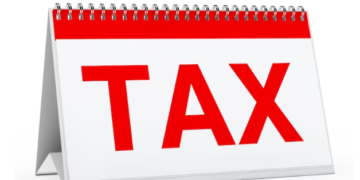Selling on Amazon requires paying fees to use their platform. Individuals and companies are both required to pay these fees. Amazon lending options and fee structuring are available to sellers to help them be successful. If you are new to selling on Amazon, here is a quick guide on fees.
Variable Closing Fee
Every item sold on Amazon’s platform has a variable closing fee. Most items are charged this fee as an additional $1.35 for shipping, both domestic standard and domestic expedited. A variable closing fee is also added to international shipping for most items. This can also be assessed by weight instead of per item.
The variable closing fee is relatively low and is not generally based on the price of the item. It is an important way to pay for shipping and handling. This is only one fee added to every item sold on Amazon, but it comes at the end. That is why it is called the variable closing fee.
General Fees
individual seller accounts are charged per item to sell on Amazon. These fees will range from 6-25% of the selling price. Professional seller accounts can opt to have a monthly fee deducted instead. The way sellers set up their accounts depends entirely on the number of items they sell each month. Individual sellers may save money by paying $1 per item sold, while professionals save money by paying a $39.99 monthly fee.
The general fees are also referred to as “referral fees.” These fees are just the cost of having the opportunity to list with Amazon. Using their website gives a bigger audience, more options for shipping, and opportunities to build a company’s brand.
FBA Fees
One option that sellers have is having Amazon store and ship items for them. This option is called Fulfillment by Amazon, or FBA. Choosing this option allows sellers to send their inventory to Amazon to store in a warehouse. It stays there until someone purchases the items on Amazon.com, and then it is packaged and shipped by Amazon workers.
This service has more fees, but it is often worth it to sellers. Most sellers function out of their homes, with limited space to store inventory. Tracking the inventory and sending it off to buyers can be overwhelming, especially as the business grows. It is also important to realize that most items sold on the website sell better when offered with a 2-day shipping option. This puts increased pressure to work quickly to fulfill orders.
FBA Fees Breakdown
An FBA option has fees for each of these services. Each is charged differently, so it is important to be aware of how they incur.
- Inventory fee: charged by bulk weight and measurement of each seller’s inventory once a month. With all the transactions a seller can have in that time, it is easiest for Amazon to charge an average daily maintenance fee on inventory left at a fulfillment center.
- Long-term storage fee: an extra fee charged to products stored at a fulfillment center for more than 365 days. This is tracked by product SKU numbers and calculated with unit volume.
- Pick and pack fee: based on the need for Amazon workers to track, find, and package the item for delivery.
- Weight handling fee: a charge based on the package’s weight in pounds when it is time to ship.
- Shipping charges fee: depends on the shipping method and services, but generally stays low since Amazon does most of the shipping themselves.
- Prep service fee: required for special prep that takes more time or extra supplies to ship the product safely.
Sellers should also be aware that there are fees for non-compliance and returns. The non-compliance charges are added to the seller fees when products are sent to a fulfillment center without the proper packaging or labels. This is to help motivate sellers to follow the rules while also paying employees who have to correct these errors to fun more efficiently.
When buyers return products, employees have to receive them, inspect them for quality assurance, enter them back into the system, and put it back on warehouse shelves. Since this requires extra work, sellers are charged a returns processing fee. This is generally charged per item returned.
Paying Fees and Amazon Lending Options
All fees are automatically deducted from accounts. This makes payment easier and less of a hassle for sellers. If a seller opts to pay the monthly fee rather than the per-item fee, that is deducted once a month from the seller’s account. All other fees are deducted from the sale price before the money is deposited from the sale into the account.
Other seller account options are done through Amazon lending platforms. These platforms work as an intermediary to help track fees. Small and medium e-commerce businesses also use this type of financial platform to introduce their brand to Amazon or grow their business by managing more listings easier.
All these payment options are done to make management easier for sellers. The money that ends up in the seller’s account at the end of a transaction is money that they get to keep. This way, no crazy bills for fees will arrive after a seller has had their payday.







































































